"Can you see this temple in Ninghai, Ningbo, China?" Local response
Author:Global Times Time:2022.08.12
"If I don't say, do you see this Guangde Temple, do you see this in Ninghai, Ningbo, China?" Recently, Guangde Temple, located in Ninghai County, Ningbo City, Zhejiang Province, caused controversy on the Internet.
After a group of tourists in Hanfu claiming to "visit", Guangde Temple "out of the circle" in another way. Many netizens claimed that they had visited the "Tang Feng Song Yun", but found that some of the buildings and components of the temple were suspected to confuse the Japanese style.
After several public opinion fermentation, the local media@在 在 网 recently released a reporter to visit and report on the spot. In addition to clarifying that the "Hanfu person cannot enter the inside" is misunderstanding, it also quoted the analysis of insiders that temple design is not "harmonious".
In addition, the staff of the local town government told the Observer.com that the renovation plan of the temple needs to be approved by the county ethnic and religious bureau, and there is no problem with the process.
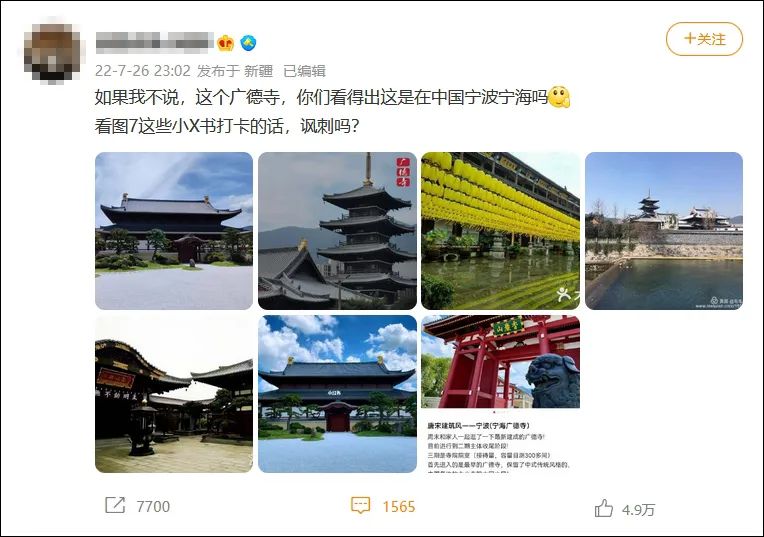
Weibo that caused netizens to discuss
"Can we wear Chinese clothing not be inside?" Official: misunderstanding
From the perspective of social media such as Weibo and Xiaohongshu, for ordinary people who lack professional knowledge, the biggest highlights of the design style of Guangde Temple are "the wind of the Tang Dynasty".
Many accounts say that it is "distinctive in Tangfeng Zen realm", which is "Ningbo Little Kyoto" -

Some tourists praise it "quite Tangfeng and Song Yun" -
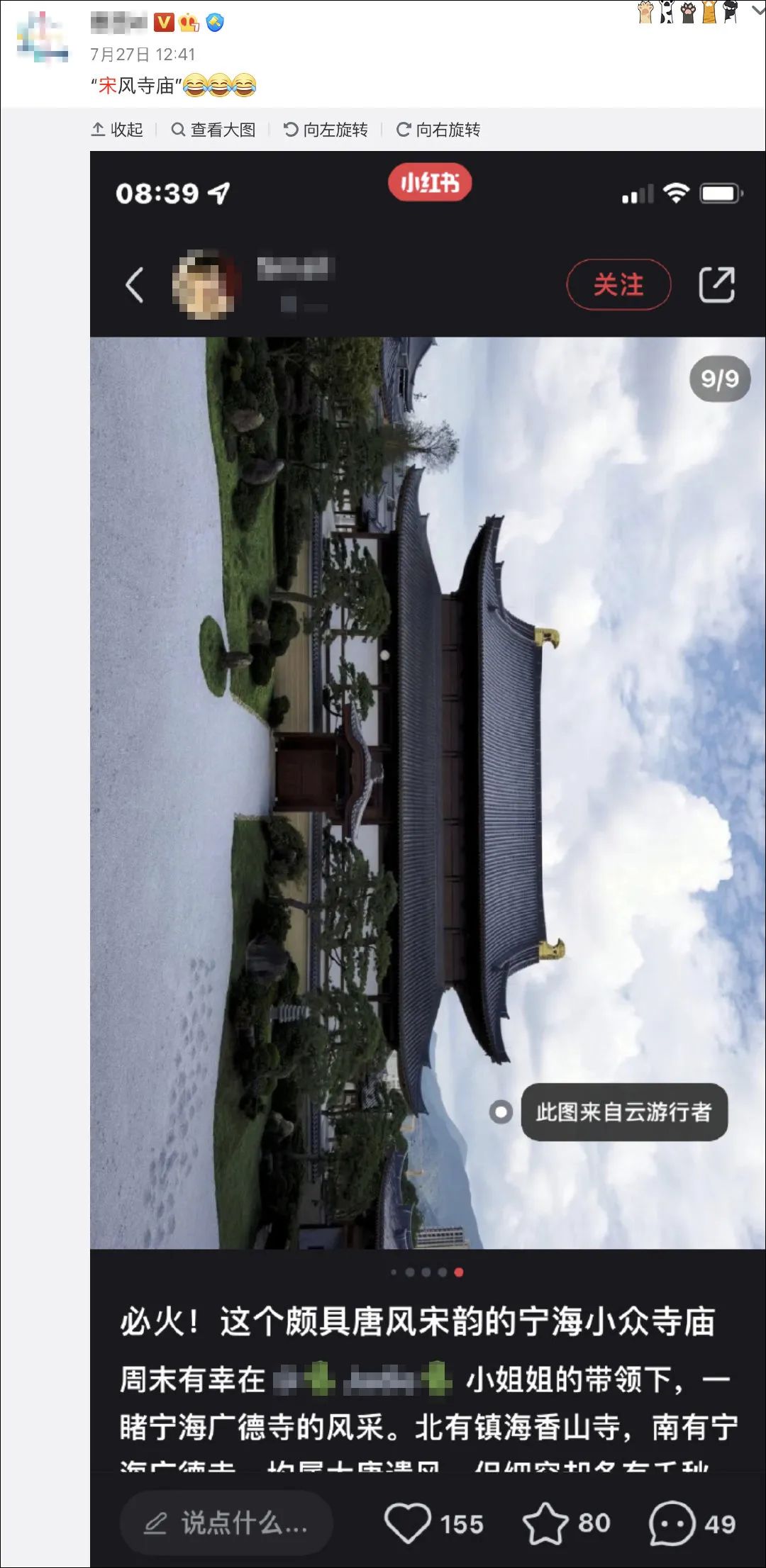
Some people bluntly stated that they went to the same model in the same model as "Tangfeng Architecture" and punching in the same model.

Some netizens have suggested that in fact, as early as last summer, during the Tokyo Olympic Games, Guangde Temple caused disputes due to its architectural style. It wasn't until June of this year that a group of tourists wearing Hanfu wanted to enter the temple to visit and was stopped. The incident was still in the local police station that Guangde Temple once again became a hot topic of Hanfu circle.
In response, the Ninghai County Party Committee directly affiliated to Rong Media@对 对 对 对 对 On the 4th, it was reported that the police at the police station at the West Store Police Station of Ninghai County Public Security Bureau learned about the situation. The police said that the temple was made by the epidemic prevention and control requirements to make reservations and currents in the people entering the temple, and the simple camera and punch cards of non -religious properties must be approved and accompanied by the monk of the temple to enter the temple for shooting. After the police explained, these tourists left themselves.
Ms. Volunteer, who was on duty at the door at the door, also admitted to@事 事 that she would not speak Mandarin, and her voice was a bit big, and she might have a strong tone to tourists during communication.
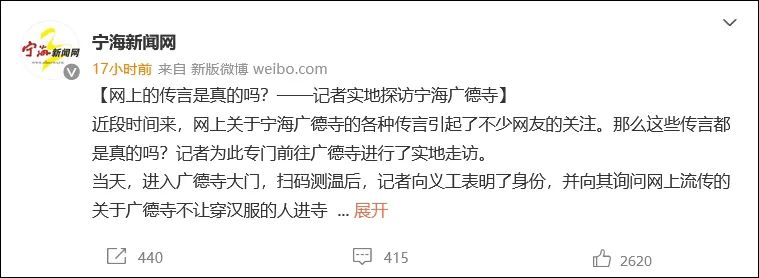
It's just a clothing. Why do the temples need to review the masters of the temple first, and then accompany them? Master Zhihui, the Guangde Temple Supervision Hospital, explained that this is because more and more people in the temple have taken photos in recent years, which has caused some troubles to the monks Qingxiu.
Master Zhihui also said that tourists are welcome to visit Guangde Temple, but they are welcome, but the temple is not a park and playground after all. I hope tourists will respect and understand the relevant provisions of the temple. The clothing that obviously does not match the atmosphere of the temple to maintain the quiet and solemnity of Buddhist places.
On social platforms, many netizens also clarified that they were not blocked when they wore Hanfu into the temple.
Tang Feng still "Hefeng"?
Of course, the greater controversy of Guangde Temple is that many people question that it is a Chinese temple that focuses on "Tang Feng Song Yun", but it is actually Japanese style.
From the perspective of netizens, the current controversy of Guangde Temple is mainly concentrated in these elements: Golden Kiss, Tang Pofeng, dry landscapes, Japanese lanterns and soy sauce. Among them, the most discussed is undoubtedly the first three.
The first is the kiss.
The so -called kiss is a kind of animal -shaped ornament at both ends of the positive ridge of the ancient building roof. Some netizens said that the golden kiss is the element that only appears in Japanese architecture. The kiss shape of traditional Chinese architecture is different, and the dynasties are not the same, and they are rarely gilt. Even yellow Yellow glaze, yellow glazed, etc. made.
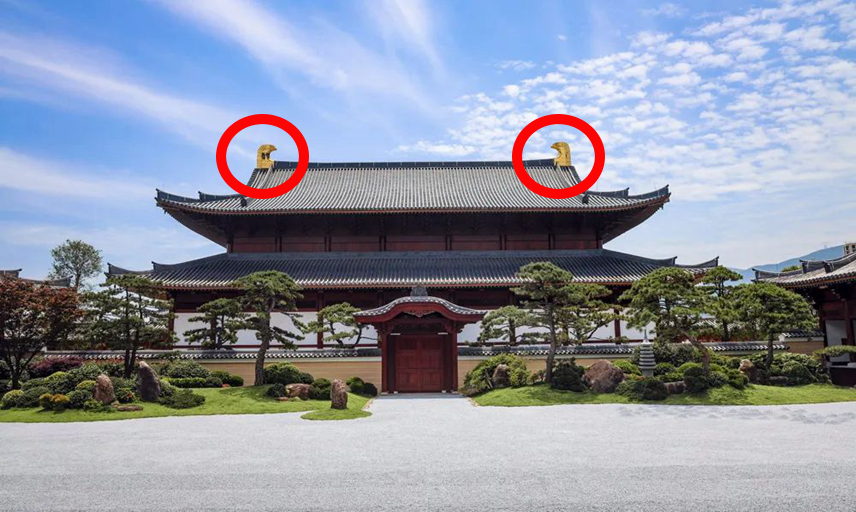
Ninghai Guangde Temple
Besides Tang Pofeng.
Tang Pofeng (は ふ () is a kind of "broken wind". In simple terms, it is a roof decorative part of the main entrance of the main entrance in the middle of the middle of the Japanese traditional building. Gow -shaped like a shade.
Some netizens believe that this is the unique architectural style that Japan has gradually developed in the process of studying the Sui and Tang dynasties. Although ancient Chinese buildings also have similar functions, called "Hao Xia", there is still a essential difference from Tang Pofeng.
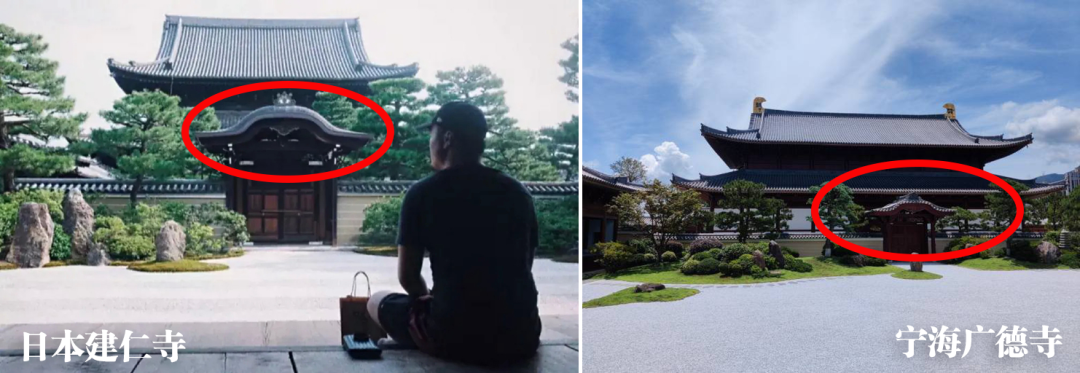
Finally, the dry landscape, which is the best point to judge.
As the literal meaning, "dry landscape" is "dry landscape" or "dry mountains and water", which is also called fake landscape in Japanese. It generally refers to the landscape of a shrinkage garden landscape composed of fine sand crushed rocks, plus some stacked stone groups, and occasionally contains moss, lawn or other natural elements.
Netizens pointed out that the deep landscape was affected by the thought of Chinese Zen, but after the local evolution, its concept was far from the pursuit of "natural" in Chinese gardens and became the representative of Japanese garden art.
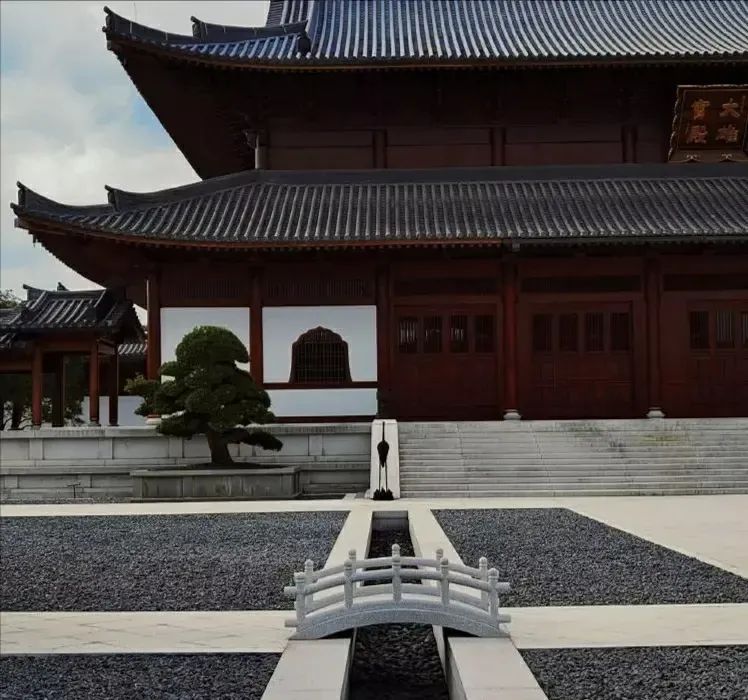
The dry landscape of Ninghai Guangde Temple
In response,@对 对 对 对 对 Xie Jing, a doctorate instructor at the Department of Polytechnic at the University of Science and Technology of Ningbo University. According to the report, he is the leader of the "Ningbo Historical Digital Humanities Research" project team in Ningbo's 1200th anniversary, and has in -depth research on traditional Chinese architecture.
According to reports, after a detailed inspection of the buildings in the temple, Xie Jing explained that the biggest characteristic of traditional Chinese architecture is the layout of the etiquette, mainly the middle axis, and the side room on both sides. The layout of Guangde Temple is from the mountain gate to the lobby to the lobby, and then to Fayang. In the end, it is the tower. This is a typical layout of Chinese etiquette culture. All etiquette regulations can be seen in the atrium. Affected by the Northern and Southern Dynasties and the Tang Dynasty, Japanese architecture may be similar to traditional Chinese buildings in monomer forms, but they did not learn the essence of traditional Chinese buildings about the overall overall layout pattern. Regarding the kiss, Xie Jing pointed out that kissing was originally an element of China. Since the Han Dynasty, all Chinese halls, including the palace and the temple, are golden and glorious. In the building, like the Liao Dynasty in Huayan Temple in Shanxi, there is a kiss made of golden glazed glazed.
"Netizens said 'Tang Pofeng', that is, the 'Hangshasha of the traditional Chinese architecture'." Xie Jing said, "This arc -shaped eaves are also common in the Nara palace architecture and temple architecture in Japan, but These eaves are made of cypress bark. The so -called "Tang Pofeng" in Guangde Temple are stitched with traditional Chinese bricks. There are also Chinese crane patterns with Chinese characteristics. Haoxia ', and Japanese -style buildings are completely different. "
The staff of the United Front Work Department of Xidian Town where the temple is located told the Observer Network that the clarification of the local villages recorded that the Guangde Temple was built in the late Ming and early Qing dynasties. Essence In 2004, the overall layout of the temple was planned. By 2007, the first phase of the Guangdezen Temple was completed.
The staff member said that the re -layout of the temple needs to be approved by the county ethnic and religious bureau, and there is no problem with the process.
Some netizens said that "the abbot of Guangde Temple once studied in Japan and liked Japanese culture, and asked the monks to study in Japan." He has also participated in foreign Buddhist exchanges. In addition to Japan, he has been to Thailand, India and other countries. After a new crown pneumonia epidemic, monks of the temple have never gone abroad to participate in similar activities. The statement about all monks in Guangde Temple must go to Japan to study, which is nothing.
Master Zhihui said that he would like to thank you for your care and supervision of Guangde Temple. For the issues and suggestions reflected, they will listen and transform and improve.
Source: Observer.com
- END -
The exhibition hall of the China Railway Second Bureau was named the first batch of China Railway "Kai Road Pioneer" cultural and educational base
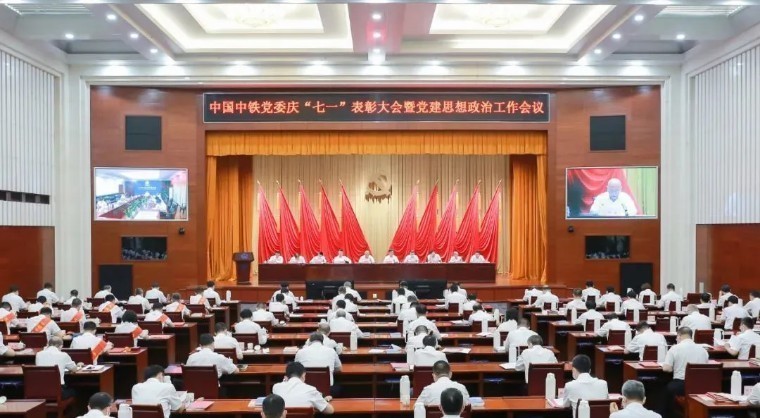
On June 27, at the July 1st commendation conference and party building ideological...
Lixian Meteorological Observatory lifted lightning yellow warning signal
Li County Meteorological Station was released on June 09, 2022 at 08:10, and the lightning yellow warning signal continued to be released at 00:25 on June 09, 2022.